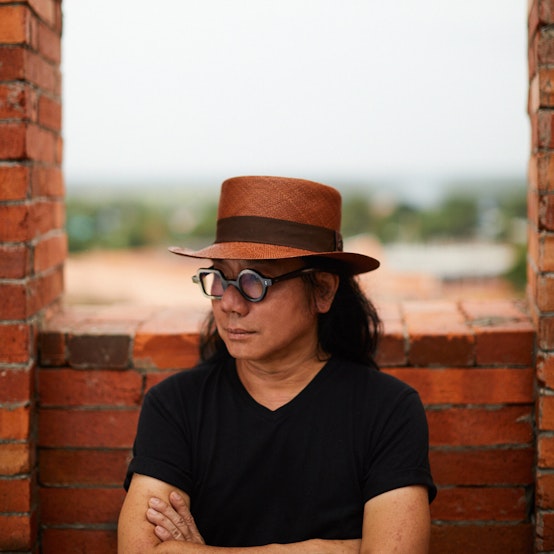The pine structure opposite King Albert I Park was on the same axis as Bruges’ three iconic towers: St. Salvator’s Cathedral, the Church of Our Lady, and the Belfry. As symbols of church and state, they had dominated the city’s skyline for centuries: landmarks and gathering places for meeting, exchange, prayer, or protest.
The Tower of Balance played with transparency, form, and materials to provide a contemporary counterpoint to the three medieval stone towers. The open construction with three wooden platforms invited exploration, with vantage points facing the city centre, West Bruges, and Sint-Michiels. Visitors could experience both the location and city from different perspectives.
A bronze bell, supported by two rough tree trunks, hung at the centre of the work. By removing this object from its ivory tower and presenting it to the public, where it could be rung, the artist managed to capture ‘the sound of Bruges.’ The bell was manufactured by the Royal Eijsbouts bell foundry, where the bells in the Belfry were once cast.
The installation’s name not only alluded to the site—a sloping stretch of grass on which the tower gracefully balanced—but also, and more importantly, to Bangkok Project Studio’s pursuit of a harmonious coexistence for humans and animals; a place where social, cultural, and economic distinctions blurred and everyone felt welcome.
Tip: If you weren’t keen on heights, you could peek inside St. Godelieve’s Abbey instead. Just step through the historic garden gate, opened especially for the Bruges Triennial.

Bangkok Project Studio was established by Boonserm Premthada (b. 1966, Bangkok, TH) in 2003. It is now one of Thailand’s most influential architecture firms. Departing from a sustainable, holistic approach, his architecture bridges the historical and contemporary, human and natural, indoor and outdoor.

